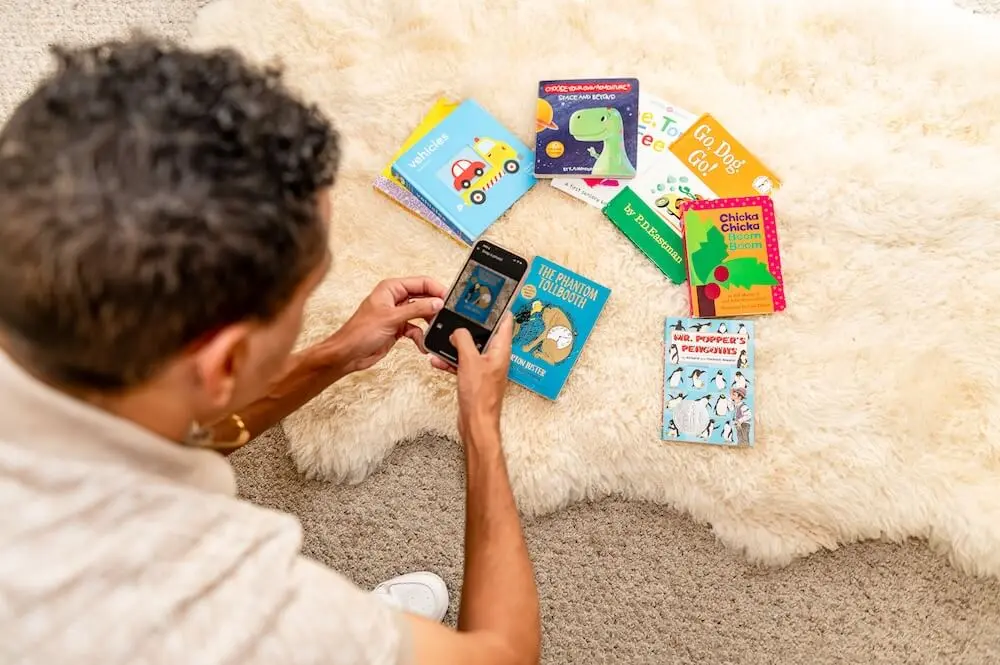PangoBooks grows ecommerce revenue 63% in first 6 months with Klaviyo

63%
YoY growth in ecommerce revenue in first 6 months with Klaviyo
30%
30% of ecommerce revenue attributed to Klaviyo in first 6 months
31%
QoQ growth in Klaviyo-attributed listings in first 6 months with Klaviyo
PangoBooks is a secondhand book marketplace, where users can buy and sell books spanning all genres—from romance and fantasy to biography—in a sustainable way. Customers can buy books on the veteran-founded brand’s mobile app and website, and sell books on the app, too.
To date, their 600K+ users have sold 2.5M+ books. Here’s how PangoBooks uses Klaviyo to grow those numbers.
Learn why PangoBooks left Mailchimp for Klaviyo’s “open-ended,” experimentation-friendly platform
Challenge
PangoBooks knew that retention marketing could be a huge revenue driver for their used book marketplace, helping convert sellers to buyers, and buyers to sellers.
The two categories overlap substantially—they’re all readers, constantly refreshing their book collections.
“There’s a lot of lifetime value to be gained in this industry, with this marketplace,” says PangoBooks CMO Dan Orkin. “Being really focused on retention makes sense.”
But when he started at PangoBooks shortly after the startup launched, the team used Mailchimp, which he viewed as “pretty amateur hour.” Orkin ran into constant roadblocks trying to build with it.
If you tried to build a flow with more than a few steps, the browser would just freeze all the time. Mailchimp performance was sluggish and frustrating.
Segmenting by users’ preferred genre, for instance, involved working with his CTO to manually export .csvs from Segment that he could import into Mailchimp as tags. The process was so cumbersome, Orkin only attempted it a few times.
He also ran into glitches building out automations in Mailchimp. “If you tried to build a flow with more than a few steps, the browser would just freeze all the time,” he says. “Mailchimp performance was sluggish and frustrating.”
Mailchimp support wasn’t much help, either—Orkin often found himself lost in a phone tree, trying to get a human on the line.
Solution
Pango decided to switch to Klaviyo. It was more powerful, easier to use, and came with superior support.
“With Klaviyo, I can do things like define a segment of lapsed users that I want to re-motivate, send them a coupon code for $5 off their next purchase, and have dynamic content in the email that shows them book recommendations—and I can do all of that in a morning without having to talk to a single developer on my team and waste their time,” Orkin says.
With Klaviyo, I can do things like define a segment of lapsed users that I want to re-motivate, send them a coupon code for $5 off their next purchase, and have dynamic content in the email that shows them book recommendations—and I can do all of that in a morning without having to talk to a single developer on my team and waste their time.
Pango’s migration to Klaviyo went smoothly—and integrating Klaviyo with Segment, where Pango housed all the events data from their custom-built website and app, only took about a week.
Now, the Pango marketing team is empowered in a new way. “I can have a junior team member create flows and targeted emails soup to nuts, and I just have to review it and provide feedback,” says Orkin. “It’s hard for me to imagine that in any other platform, and it speaks to Klaviyo’s intuitiveness.”
And when unexpected challenges come up, support at Klaviyo is much better than it was at Mailchimp. Orkin estimates he’s submitted 5 tech support tickets to date, and they’ve all been answered within 24 hours.
Strategy
To date, the Pango team has launched 20 flows in less than a year with Klaviyo, and Orkin plans to launch many more.
Here are just a few things Pango has been able to do with Klaviyo’s powerful flow builder:
- Expand their welcome flow: This flow, which was “bare bones” in Mailchimp, now starts with custom messaging based on where the user signed up. (If they signed up on the website, they get a nudge to check out the app, which has fuller functionality.) Next, they’re invited to make their first purchase; once they do, they’re invited to sell their first book. With 9 total conditional splits, it’s “significantly better” and more sophisticated than it used to be, Orkin says.
- Coach sellers: With Klaviyo, PangoBooks can deliver tailored tips to sellers—and it already helped the team grow Klaviyo-attributed book listings 31% QoQ in Q2 2024. For example: if a seller has listed fewer than 5 books, they get a flow advising them to list more; if they list over 5, they get tips on optimizing their listings and storefront.
- Build push flows: Pango has their own custom-coded, “homespun” push notifications system for their app, and use Klaviyo to trigger personalized push automations via webhooks.. One example: an abandoned cart push flow.
This is just the tip of the iceberg for PangoBooks, too. The rapidly-growing startup is still in their first year with Klaviyo—and the team will continue optimizing and building on what they’ve done so far.
“Klaviyo is a really good fit for this phase we’re in, where you want to experiment and iterate quickly and not have a lot of red tape,” says Orkin. “I’ve been really impressed with the Klaviyo software itself, just how usable it is. I can’t think of a situation where I thought, ‘Oh, I’d love to do this in Klaviyo, but I can’t.’”
Klaviyo is a really good fit for this phase we’re in, where you want to experiment and iterate quickly and not have a lot of red tape.